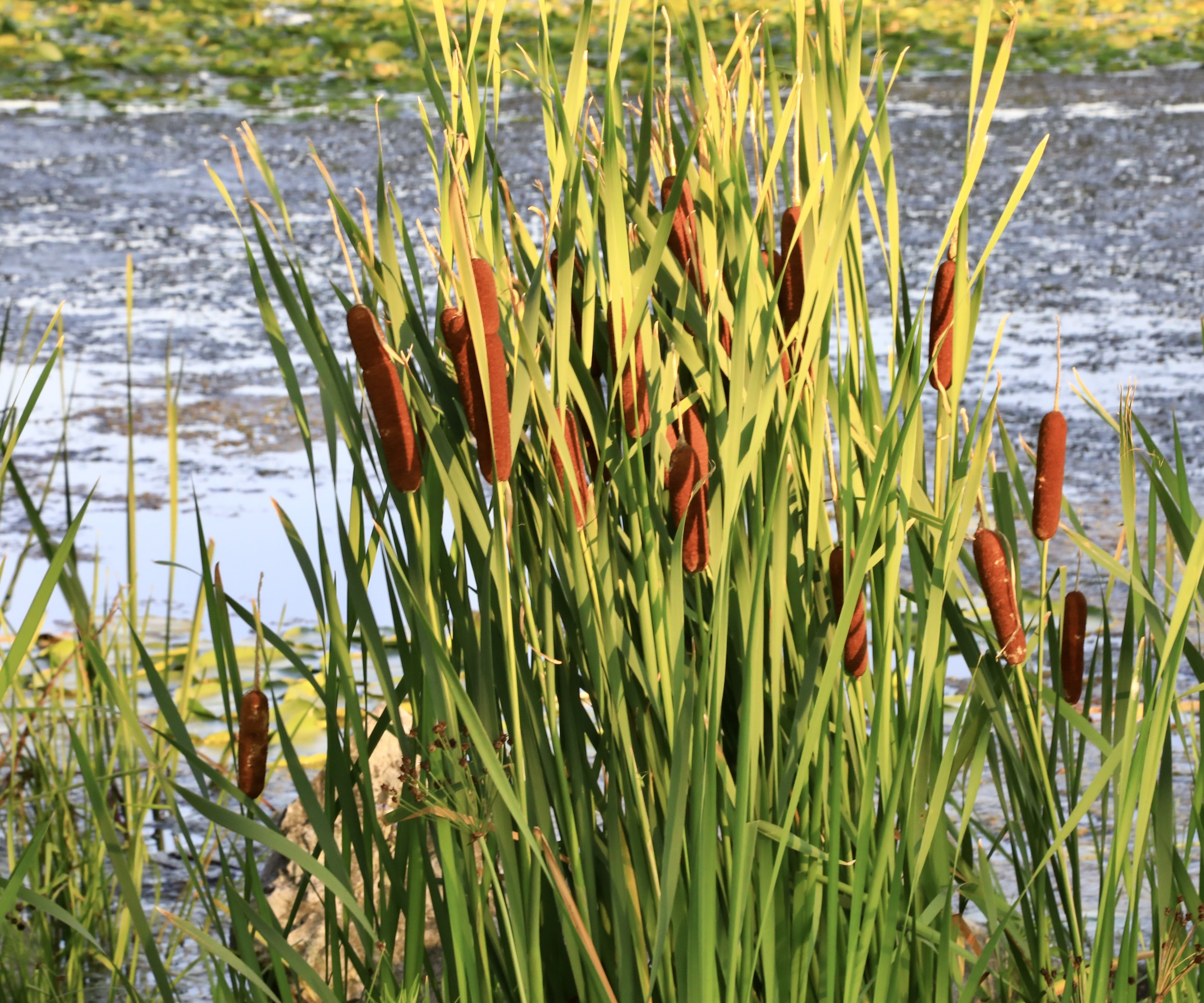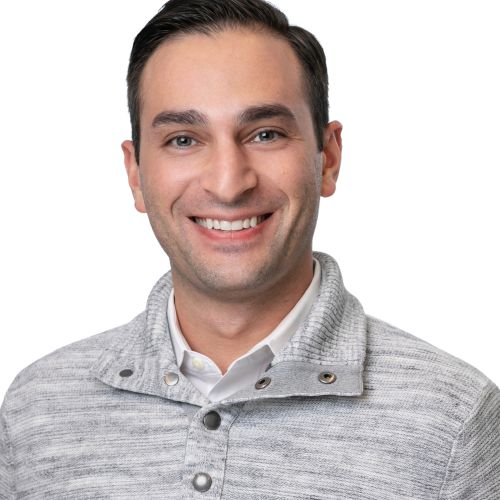Best plants for a natural swimming pool – 8 plants to transform your space
Upgrade your natural swimming pool into a greener, cleaner area with these ultimate pool plants


Natural swimming pools are gaining popularity as an eco-friendly alternative to traditional pools, and for good reason. They provide a refreshing, chemical-free way to swim while supporting a more sustainable lifestyle. However, the success of your natural pool will largely depend on the plants you choose, as the right varieties are essential for filtering and purifying the water.
Each plant type serves a specific purpose, from oxygenators that keep the water clear and healthy to marginal plants that stabilize the pool’s edges and attract beneficial wildlife. By selecting the right mix of greenery, you can ensure your pool remains clean, balanced, and low-maintenance year-round.
We asked gardening and pool experts to share some of their favorite plant picks to elevate a natural swimming pool and help create a harmonious body of water that invites you to dive right in.

Best plants for a natural swimming pool
When considering the best plants for a natural swimming pool, it's important to incorporate a mix of submerged, floating, and emergent plants to create a balanced ecosystem that naturally filters the water. With this in mind, here are eight of the best plants to consider for your natural pool.
1. Vallisneria

Latin Name: Valisneria americana
Growing information: Submerged plants are essential for keeping natural swimming pools healthy and vibrant. 'My favorite submerged plant variety has to be Valisneria americana, otherwise known as Corkscrew Vallisneria,' shares Peggy Wiles, managing partner at California Natural Pools.
Design expertise in your inbox – from inspiring decorating ideas and beautiful celebrity homes to practical gardening advice and shopping round-ups.
'These elegant underwater plants are excellent oxygenators and nutrient consumers. They are also known for curbing algae growth via allelopathy (the inhibition of growth in one species of plants by chemicals produced by another species).'
Corkscrew Vallisneria not only adds a unique visual appeal with its spiral-shaped leaves but also works hard behind the scenes. By oxygenating the water, it supports a thriving ecosystem for all the plants and aquatic life in your pool. Plus, its natural ability to keep algae in check means your pool stays clear and inviting without much extra effort.

With 28 years of experience in contracting and project management, Peggy Wiles has become a leader in bringing Natural Swimming Pools to Central California. Passionate about eliminating harsh chemicals and restoring ecological habitats, she’s dedicated to creating healthier, more sustainable environments. Peggy’s expertise and commitment make her a trusted voice in eco-friendly pool design.
2. Water Lilies

Latin name: Nymphaea spp.
USDA Hardiness Zone: 3-11 (varies by species)
Growing information: Water lilies are among the most iconic and essential plants for a natural pool. Not only do they contribute to water clarity by limiting sunlight and preventing algae blooms, but they also offer shelter for aquatic life, which can enhance the biodiversity of your pool.
According to Jennifer Cassels, president of The Blissful Place: 'Water lilies have large leaves that can cover wide surface areas, thus reducing algae growth through shading the water. Moreover, their eye-catching flowers also add beauty and elegance to any setting, making them ideal for creating tranquil oases within pools.'
'They grow best in stagnant or slow-moving water and require minimal care once established, such as periodic fertilization and dividing; hence, you should plant them in containers submerged on the pool floor for easy transfers and depth adjustments.'

Jennifer Cassels, President of The Blissful Place, is a leading authority in luxury outdoor décor, renowned for offering artisanal fountains, birdbaths, planters, and fire pits nationwide. Having helped over 3,000 homeowners and landscape professionals turn their visions into reality, Jennifer’s curated collections transform ordinary settings into breathtaking spaces that inspire awe and admiration.
3. Hornwort

Latin name: Ceratophyllum demersum
USDA Hardiness Zone: 3-11
Growing information: Hornwort is a submerged plant that’s highly valued in natural swimming pools for its vigorous growth and low maintenance needs. Its ability to float freely means it can adjust to various depths, making it versatile for different areas of your pool.
'These plants act as a natural filter for pools, absorbing excess nutrients that would otherwise fuel algae growth,' explains Jennifer Cassels.
'Its feather-like dense foliage provides safe zones for smaller aquatic creatures, thereby contributing greatly to the ecosystem's overall health. Consequently, being rootless allows it not to depend on soils; it can float freely. Place them gently into your pool, allowing plenty of space for them to spread naturally. Then, regularly thin out overgrown sections to maintain the quality of your pool water.'
4. Yellow Flag Iris

Latin Name: Iris pseudacorus
Growing information: Yellow flag iris is a standout choice for natural swimming pools, not just for its vibrant yellow blooms, but also for its ability to stabilize the edges of your pool. The strong root system helps prevent soil erosion and keeps the banks of your pool intact. Moreover, its ability to thrive in shallow water makes it a perfect choice for planting along the pool’s perimeter, where it can filter water and contribute to the pool’s overall health.
According to Jennifer Cassels, 'Irises, especially those varieties that love wet conditions, such as yellow flag iris, work well along the edges of natural swimming pools because apart from producing eye-catching flowers, they also have attractive leaves that enhance their aesthetic appeal.'
'To grow irises, plant them in shallow areas with consistently moist soil or along the water's edge, ensuring they receive full sunlight. Also, remember to divide and replant rhizomes regularly to encourage growth and prevent overcrowding. Yellow flag iris can be invasive, so regular monitoring and control are essential to prevent it from spreading excessively.'
5. Cattails

Latin name: Typha spp.
USDA Hardiness Zone: 3-10
Growing information: David Miller, experienced arborist and landscape gardener describes cattails as 'the workhorses of the natural pool world'. They thrive in shallow water and have a natural knack for filtering out impurities. Their tall, reed-like appearance also adds a vertical element to the pool, creating a more dynamic and natural look.
Cattails are a staple in many natural swimming pools due to their hardy nature and ability to filter out impurities. Their tall, distinctive stalks create a dramatic, vertical visual contrast that can enhance the natural feel of your pool.
Additionally, cattails offer a habitat for birds and other wildlife, further enriching the ecological balance of your pool environment. They are particularly effective at trapping sediments and pollutants, making them essential for maintaining water quality.

David Miller is an experienced arborist in the tree service business. He has a deep understanding of plant care and maintenance, focusing on sustainable practices. He specializes in nurturing and enhancing the beauty of gardens and landscapes, including natural pools.
6. Pickerelweed

Latin name: Pontederia cordata
USDA Hardiness Zone: 3-10
Growing information: Pickerelweed is a beautiful, tall, emergent plant in the Pontederiaceae family that is excellent for absorbing nutrients from water and improving water clarity.
According to David Miller, 'This hardy plant is another excellent choice for natural pools. Its heart-shaped leaves and vibrant blue flowers are not only beautiful but also provide a habitat for beneficial insects. Pickerelweed is also a nutrient sponge, helping to keep the water clean.'
But a note of caution – Pickerelweed can be considered invasive in certain areas, so make sure you check this before adding it to your pool or pond plant collection.
7. Water Mint

Latin Name: Mentha aquatica
USDA Hardiness Zone: 5-9
Growing information: Water mint is a wonderful addition to any natural swimming pool scheme, as it is both beautiful and practical. With its creeping growth, it forms a lush green border around the water’s edge, helping to prevent soil erosion while creating a natural, inviting look.
David Miller observes, 'Beyond its visual appeal, water mint is a natural competitor against algae, ensuring your pool stays clear and healthy. Plus, its invigorating minty scent enhances the overall experience, making your pool area even more enjoyable.'
8. Marsh Marigold

Latin Name: Caltha palustris
USDA Hardiness Zone: 3-7
Growing information: Pretty Marsh Marigold is one of the best oxygenating pond plants. Known for its bright yellow blooms that bring a splash of color in early spring, this plant is particularly well-suited to the edges of your natural pool or in shallow water zones, as it thrives in consistently moist soil.
The shallow root system of these plants helps stabilize the pool’s edges, reducing erosion and maintaining the integrity of the surrounding environment. Its vibrant flowers also attract pollinators, enhancing the ecological diversity of your pool area.
Key considerations when selecting plants for natural pools

'When selecting plants for a natural swimming pool, it’s important to remember that one size doesn’t fit all,' says David Miller. 'Plants are like people – they have their preferences when it comes to temperature, sunlight, and water conditions.'
Here's what our experts recommend you consider when selecting plants for your backyard scheme:
Climate Adaptability
'Aquatic plants are rated by USDA hardiness zone just like terrestrial ones,' explains Rafi Friedman, CEO at Coastal Luxury Outdoors. 'So, make sure you're choosing plants that are suited for your zone, and make sure your pool is deep enough to avoid freezing completely in colder zones.'
In warmer climates, David Miller recommends opting for plants like water hyacinth (Eichhornia crassipes) or taro (Colocasia esculenta), which thrive in heat and full sun. In cooler climates, consider hardy plants like marsh marigold (Caltha palustris) or sweet flag (Acorus calamus), which can withstand colder temperatures.

Rafi Friedman is the president of Coastal Luxury Outdoors, a pool building, construction, and cleaning company based in Florida.
Pool Position and Depth
'Some plants prefer the shallows, while others do better in deeper water,' explains David Miller. 'Cattails and water irises, for example, love the shallows, while water lilies are more at home in deeper, still waters. Also, consider the flow of water – plants like duckweed (Lemna minor) do well in still areas, while those like reed grass (Phragmites australis) can handle a bit of a current.'
'Just as you wouldn’t place a sun-loving plant in the shade, be mindful of the sunlight your pool receives. Sun-loving plants like water lilies should be placed in areas that get plenty of light, while shade-tolerant plants like marsh marigold are better suited to partially shaded spots.'
'It's also essential to separate your primary aquatic plant zone from your swimming zone, as the plants won't hold up to that much disturbance' adds Rafi Friedman.
Watering Needs
When planning your natural swimming pool, it’s important to consider the watering needs of the plants you choose. Some plants thrive in submerged conditions, like water lilies, which help keep the water clear and balanced. Others, such as certain marginal plants, prefer consistently moist soil along the pool's edge. Matching plants to the available water conditions in your pool ensures they will thrive with minimal intervention.
In areas where water is scarce, opting for low-water-use plants can conserve resources and reduce maintenance. Some great options for low-water-use plants in natural pools include sweet flag (Acorus calamus), which is hardy and adaptable, and creeping jenny (Lysimachia nummularia), which can tolerate drier conditions around the edges of the pool. These plants not only survive with less water but also add beauty and texture to your poolside environment.
Maintenance Needs
To keep your natural swimming pool in top shape, it’s essential to plant and maintain your greenery with care. Different kinds of plant species require varying levels of attention for them to grow properly.
Here's what David Miller recommends:
- If you're new to gardening, consider opting for native species, which do not need much care and are suitable for busy lifestyles. These types of plants can adapt well to local ecosystems and are more resistant to pests and diseases, thus reducing chemical usage during treatment.
- Begin by planting in the spring or early summer when the water temperature is on the rise. Use aquatic soil or gravel as a planting medium, and avoid regular garden soil, which can cloud the water.
- Just like guests at a dinner party, plants need space to spread out. Overcrowding can lead to poor water circulation and increased competition for nutrients, which can stress the plants. Give them room to grow and thrive.
- Keep a close eye on your pool’s ecosystem. Prune back dead or dying leaves to prevent decay in the water, and remove any debris that might accumulate on the surface. It’s also important to monitor nutrient levels and add supplements if necessary—though with the right plants, nature often takes care of itself.
- Natural swimming pools rely on more than just plants to stay in top condition. So make sure you also use natural shale and artificial circulation with pumps to keep the water clean.
Aesthetic Appeal
Finally, it's important to consider the aesthetic of your natural pool. There's no point in going to the trouble of creating a unique pool if it doesn't blend seamlessly with the rest of your design scheme. The right mix of textures, colors, and forms can be transformative.
Consider plants that offer year-round interest, such as the graceful cattails (Typha spp.), which add vertical structure and movement, or classic water lilies to add elegance and a sense of calm to the water’s surface.
To create depth and contrast, incorporate plants with different heights, like the tall, reed-like pickerelweed paired with the low-growing, aromatic water mint.
It’s not just the plants within your pool that matter; what you plant around a pool is equally important. When considering backyard pool planting ideas be mindful of your choices. Selecting the worst trees to plant near a pool can result in excessive leaf litter and debris, but planting the best shrubs for privacy can elevate your space.

Gabriella is a freelance contributor for Homes & Gardens. She is a DIY enthusiast and a lover of all things interior design, often found antiquing or browsing the aisles of her local hardware store. She has a particular passion for historic buildings and is in the process of renovating a Victorian coachhouse in the countryside.
For much of the past decade, Gabriella has worked as a freelance writer, crafting copy for national publications and renowned homeware brands. Most recently, she worked for Homebuilding & Renovating Magazine and is the former Head of Solved at Homes & Gardens, focusing on case studies for the magazine and website, as well as writing features about issues surrounding historic and listed building projects.



